Living in tune with the seasons
Penned on the 19th May 2023
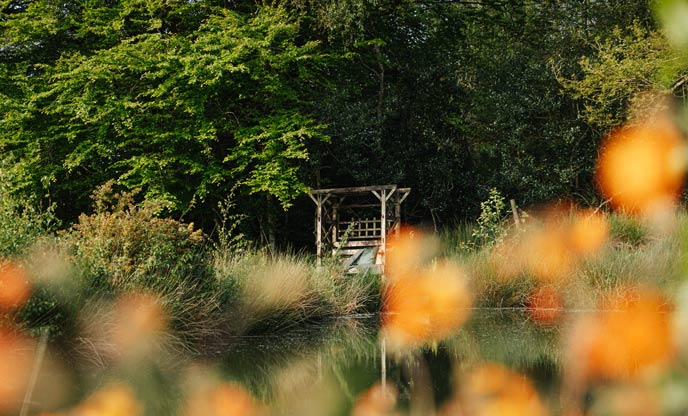
Here at Unique hideaways, we are huge fans of The Almanac, A Seasonal Guide To 2024. On the first of every month, there's nothing more grounding than making a morning cuppa, opening this beautiful book and taking a moment to turn the pages to read what lies ahead for the new month. From moonrises and tide times to seasonal eating and what wildlife to look out for, author Lia Leendertz covers everything nature has to give throughout the year. In this blog, Lia shares her personal experiences and insights with us on the benefits of living in tune with the seasons, inspiring us all to live a little more in line with the movement of the year and months that lie ahead.
Inspiration for The Almanac
A few years ago now I went on a holiday to Cornwall. The house I stayed in had a view out across the water at Hayle Sands, and I stood at the kitchen window day and night and watched the tide rolling in across the sands, and then receding and leaving them shining and reflecting the sky and the lights of St Ives across the bay. I watched the sun setting and marvelled at the pink clouds it picked out as it vanished, and then I saw the moon following its path and sinking into the sea itself. The stars came out and wheeled across the sky above me.
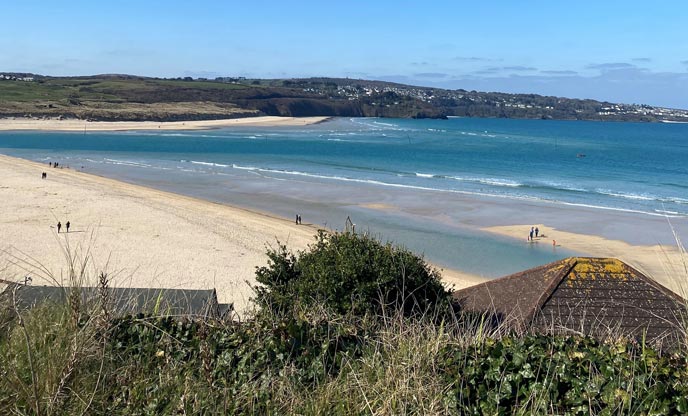
I had a strong sense then that all of this had been passing me by. Sadly I do not live in a little house overlooking the sea, but I realised that in a sense that didn’t matter. All of this happened anyway, whether or not I had ridiculously easy access to it. It happened when I was gazing at it on my holiday, but it was still occurring when I was sitting in my terraced house in Bristol. I wanted to find a way of accessing it all year round.
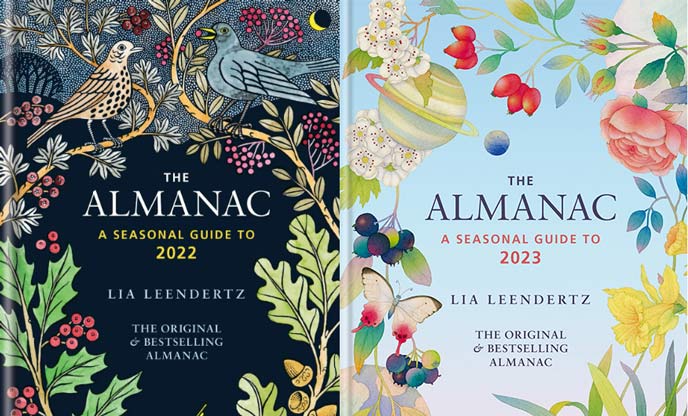
This was the first impulse that eventually led to my creation of The Almanac, which I now produce annually. I would make a book, I thought, that would give me all of that – moon phases, sunrise and sunset times, tides and the sky at night. But I would also use these moments of connection to the world around us to connect myself and others to the seasons, month by month.
What is seasonal living and why do I need it?
Our seasons here in the UK move impressively fast. Every month has its own features, traditions and atmosphere. Think of the difference between still-wintry April and vibrant green May; between lazy August and business-like September, all sharpened pencils and new shoes; or the big one, the difference between December with its jollity and excess, and bare, sparse January. Don’t like a month? Well relax and hang on, because another one will be along in roughly 30 days’ time. Despite all of this, many of us let these differences and moments pass us by. We move between centrally heated homes and centrally heated (or air conditioned) offices. We don’t need to learn about the seasons to grow our own food and anyway, the supermarkets and food systems have ironed out any sense of seasonality, giving us cherries in April and strawberries at Christmas.

But why do you need it? Simply put, you don’t. But in my opinion, a closer connection to the seasons around us is key to a happier, more interesting and more enriching life. Living with half an ear cocked to the changing seasons is a way of noticing what is special about the world around us and of creating ritual in your everyday life, even if that ritual is just sitting down to savour the first asparagus each year dipped into a soft boiled egg. Just as we would soon get sick of eating a Christmas dinner every day, the anticipation of the differences each month are all the more enjoyable for being tied to that one moment in the year. You have to wait for your mince pies and they are all the sweeter for it.
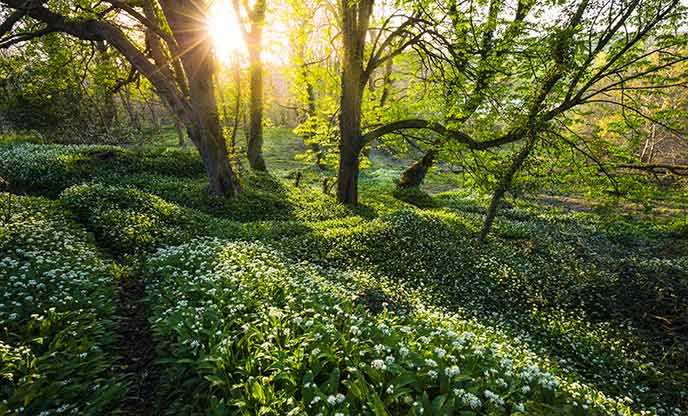
Foraging is a wonderful example of one of the best ways to experience this because it can’t really be cheated. Almost all foraged plants are available for only a brief window, and that is tuned to the cycle of the year. Take one example: wild garlic, which carpets the ground in woodlands in April. It is picked as green leaves and chopped into foods such as cheese scones and scrambled eggs for its mild garlic flavour and by May it is flowering and past its best. It only does all of this so early in the year because the plants need to spring up, flower and set seed before the woodland canopy fills out and cuts out most of the light reaching the ground. And so in this way an understanding of a foraged food and when to seek it out leads to a new level of understanding of the way the woodland year works. It is the same for other foraged foods. Elderflowers appear at a moment in the year when the countryside is full of flowers, when winter has relinquished its grip and every plant is trying to get the bees to pollinate it as soon as possible so that it has a chance to set berries and seeds before autumn. Blackberries are the start of that autumnal berrying phase. The foraged food becomes a part of the whole experience of understanding the turn of the year.
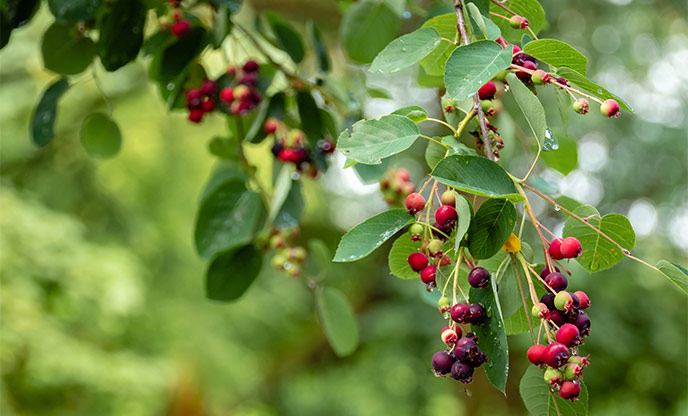
There is also plenty of evidence that eating with the seasons is better for you and for the planet. Eating seasonally means eating foods when they are at their peak and full of nutrients, and it is more likely to lead to eating from local suppliers, reducing air miles and carbon footprints.
Seasonal cycles and energies
As my years of producing the almanacs have gone on, I have become more and more interested in the way the turn of the year affects us and the ways in which we can look to nature and lean into its rhythms to help us live better. The great clean broom of January is an example of where I think we are currently getting this wrong. When January comes, we are bombarded with messages about how to throw ourselves into the new year: New Year - new you, it is time to start the January diet and a new gym regime, we are told. It is relentless and we are told to keep moving, keep going, create new things, start new projects. But if we look to nature at this time, what is actually happening? Very little indeed. Light levels are low, with days almost as short in January as they are in mid-winter. The temperature is colder and the weather more inclement. Birds may be out and about, but what are mammals doing? They are either hibernating or doing something very close to it, tucked away and expending as little energy as possible.

I think this is a moment in the year to remember that we too are mammals and to behave much like them. Get cosy, eat comfort food, rest and sleep as much as you can. When you start off the year with huge energy and new projects you quickly run out of steam. Better to use this time to think, imagine and dream. Make like a seed under the soil and wait, dormant. When the light and temperature start to increase we often find that our energy naturally does with it. We can enter the lighter, warmer part of the year having dreamed up ideas, done the groundwork and taken the rest. This is the way to avoid burnout, and to make sure your energy is at its peak when it is most needed.
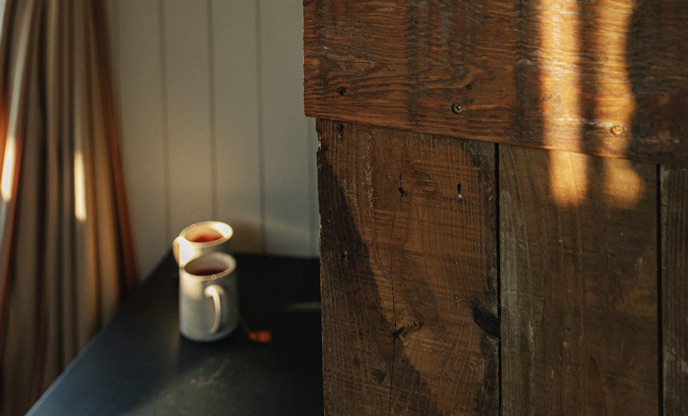
Likewise, as the year begins to wind down towards autumn, maybe we should too. Don’t fight the encroaching darkness, but embrace it. Turn to crumbles, chunky jumpers, candles and new Netflix series. Matching your energy with the seasons is another way of changing your mindset so that you don’t dread winter and instead embrace every month of the year including the wintery ones, for an opportunity to snuggle down, take time for yourself and to simply think your thoughts.
Finding the keys
The joy of living seasonally is that everyone can do it in their own way. If foraging isn’t your thing, then perhaps you might prefer to cook a dish tied to a particular celebration, such as pancakes for Shrove Tuesday, or Parkin for Bonfire Night. These are foods that have been cooked at these moments in the year for hundreds of years and we can become a part of the continuation of tradition by joining in ourselves, passing them on to our children or to other people around us for them to pick up the baton later on.

If it isn’t food that interests you then perhaps you would enjoy learning about the night sky and the way the moon and the major constellations cycle through our skies through the years. The bright planets Venus, Mars, Jupiter and Saturn are often as bright as the brightest stars and can be easily seen with the naked eye even in cities and areas with high light pollution. They do not have a seasonal cycle, but they are wonderful to watch out for anyway and a fabulous connection to the cosmos that can be found by just glancing out of the window. But the moon is obviously cyclical and taking note of its cycle through the month is perhaps the most ancient form of a calendar and of marking time. And other phenomena in the sky at night guide us through the year. Meteor showers appear at the same time every year, as we move through the dust clouds left behind by comets in our annual turn around the sun and certain constellations are higher in the sky in winter and then fall low on or below the horizon in summer. Learn to look out for them and you can mark the year in meteor showers and stars just as you can mark it in mushroom picking or the ripening of elderberries. Equally, you might go out and pick and arrange flowers, seedheads or berries from the hedgerows, to arrange in a seasonal vase at home each month, or learn folk songs and folk stories tied to particular moments in the year, or search out local celebrations such as wassailing and well dressing.
There are many different keys that can open up the year for you and that can help you to find your own ways of living in tune with the seasons and marking and enjoying every moment of the year, as it passes.